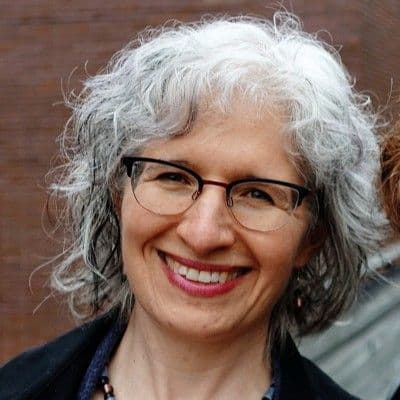Change isn’t easy — and organizational change projects are no exception.
Maya Townsend knows firsthand how difficult such changes can be, as the founder and lead consultant of Partnering Resources.
Her practice is grounded in organizational networks — the complex, interrelated, and often messy webs of relationships that drive all organizational activity. Experience has taught Maya that sometimes even the best realignment efforts don’t stick.
“It’s incredibly frustrating,” Maya says. “You do a great project, you leave the organization, and then you look back a year later, and it's all gone. Sometimes the organization's worse than before.”
What steps can companies take to make sure their organizational change efforts succeed? In her appearance on the Dreams with Deadlines Podcast, Maya discussed the importance of uncovering and understanding the informal network of influence in organizations and how to use that knowledge to make positive, lasting changes.
Network mapping to uncover key relationships in your organization
Power is determined by hierarchy. The higher an individual is on an organizational chart, the more power that individual formally possesses.
But power isn’t the determining factor in the success of a change project. It’s influence.
“Every single organization has a network. It's what we do as human beings. We create instinctually the relationships that we need in order to get our job done. If you were to visualize all those connections, you'd have a network map. What we know from studying many network maps is that there's a common pattern, which is that in any network, about 10 to 15% of the people have disproportionate influence over the whole.”
Creating a network map of this informal organization can reveal who possesses the influence within an organization, which is critical to any good change project.
These influencers — “critical connectors” — tend to be most trusted by their peers. They tend to have a much broader reach because of their position in the network.
To create the network map, Maya recommends creating a web-based survey in which employees are asked about to whom they go for specific things. The names that come up often are probably your “critical connectors.”
“This gives an incredible amount of information about how knowledge spreads through the organization, where change happens quickly, where it happens slowly, where collaboration is working.”
What executives should not do, according to Maya, is attempt to identify the organization’s influencers based solely on their perceptions. Executives often don’t have line-of-sight that reaches far beyond their own direct reports, and their assumptions are often flawed.
Types of critical connectors
There are three types of critical connectors, according to Maya:
The Hub
Hubs are who others turn to for juicy office gossip. They know who is dating whom, who’s on the outs with their division’s boss, and so forth.
Hubs also know who to go to for expertise. They have connections that can provide them with the information they need. People who don’t know how to track this information often rely upon hubs.
The Gatekeeper
Gatekeepers control the flow of information from one group of people to the rest of the organization.
“The reason why they are important, particularly during change or strategy implementation, is that without them opening that gate, information can't get through where it needs to get through.”
The Pulse-taker
The pulse-takers may not have the most connections, but they have the quickest methods to navigate the network.
Pulse-takers are tougher to spot because they tend to be the quiet employees, the behind-the-scenes operators. They understand where the backchannels are and how to use them. They know how to find the information they need quickly.
Finding resistance and gaining buy-in
No matter how well-thought-out and well-intentioned, reorganization efforts are highly likely to fail if they don’t account for the dynamics of influence within the organization.
The key is to get critical connectors on board with any proposed organizational changes. These influencers can assess and provide useful feedback regarding proposed changes, and they can communicate these changes to the rest of the organization.
By addressing the organization’s critical connectors before implementing changes, leadership gets an opportunity to identify and address resistance to their proposals.
Once critical connectors have bought in, they’ll do the heavy lifting to bring along the rest of the organization.
This article is based on an episode of Dreams With Deadlines by Quantive — the strategy-meets-execution podcast where you'll hear of real trials and victories in business. The show is hosted by me, Jenny Herald, VP of Product Evangelism at Quantive. Subscribe via Apple, Spotify , or wherever you listen to podcasts to hear my discussions with thought leaders and learn how to shrink the gap between strategy and its day-to-day implementation.





